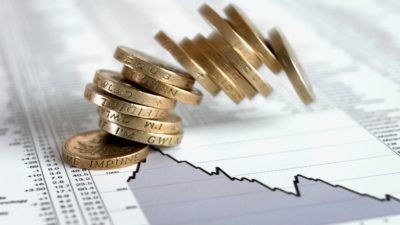Glencore’s (LSE: GLEN) share price has fallen significantly from its 12 April 12-month traded high of £5.05. Its decline has reflected market uncertainty about the strength of China’s economic rebound from its Covid years.
The fast-growing economy from the 1990s to the onset of the virus almost single-handedly created the commodities supercycle over the period. And Glencore was a big supplier of many of them.
Is China at a positive turning point?
Last year, China recorded economic growth of 5.2% against a target of 5%. The same target is in place this year, and I have no doubt it will be achieved as well.
Should you invest £1,000 in Glencore Plc right now?
When investing expert Mark Rogers has a stock tip, it can pay to listen. After all, the flagship Motley Fool Share Advisor newsletter he has run for nearly a decade has provided thousands of paying members with top stock recommendations from the UK and US markets. And right now, Mark thinks there are 6 standout stocks that investors should consider buying. Want to see if Glencore Plc made the list?
Looking further ahead, the government announced on 9 December the first easing in its monetary policy stance in 14 years. This is aimed at spurring economic growth. And so is the more proactive fiscal policy it announced at the same time.
Monetary policy focuses on interest rates and bank reserve requirements to drive economic expansion. Fiscal policy focuses on tax changes and government spending to do the same.
The main risk for Glencore is if these measures stall for some reason, in my view.
That said, consensus analysts’ estimates are that the firm’s earnings will grow 42.8% each year to end-2026.
And it is worth remembering I think that even if China’s economy grows ‘just’ 4.5% annually it will add an economy the size of India’s to its own every four years.
How does the share value look?
On the price-to-sales (P/S) ratio, Glencore is bottom of its competitor group at just 0.3. Anglo American is at 1.3, Rio Tinto at 1.9, BHP at 2.4, and Antofagasta at 3.4, giving an average of 2.3.
It is also bottom of the group on the price-to-book (P/B) ratio, trading at only 1.4 against a competitor average of 2.3.
To put these undervaluations into share price terms, I ran a discounted cash flow (DCF) analysis. This shows Glencore shares are 32% undervalued at £3.67.
Therefore, their fair value is £5.40, although they may not reach that point any time soon, of course.
What’s happening with the dividend?
Glencore paid a total dividend in 2023 of 13 cents, fixed at a sterling equivalent of 10.1p. This yield of 2.8%. The current FTSE 100 average is 3.6%.
However, its H1 2024 results highlighted the potential of top-up shareholder returns from February 2025. The firm said that deleveraging just $0.3bn would be required to reset its $10bn net debt cap that would allow for such payments.
Special dividends were paid in 2020, 2021, and 2022 of, respectively, 4 cents, 11 cents and 8 cents. The last of these pushed the total payout at the time to 52 cents, giving a yield of 9.3%.
Will I buy the shares?
I think Glencore’s strong earnings growth will push the share price much higher over time. I also believe it will do the same for the dividend, regardless of whether Special Dividends resume.
So at its reduced price from April, it does broadly look like a great buying opportunity, albeit not for me.
I already own stocks in the commodities sector. If I bought another, it would unbalance the risk-reward weighting of my portfolio.
If I did not have these, then I would buy Glencore now, based on its earnings growth outlook.








